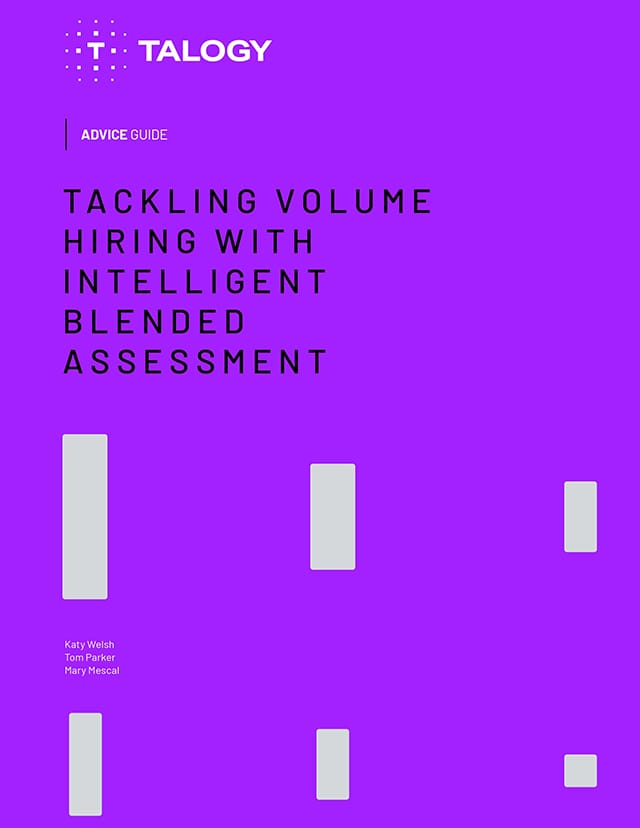Written by Cassandra Walter, Consultant
During periods of high-volume recruitment, your job as a recruitment manager can get very stressful. You have multiple open positions and you’re likely receiving a lot of pressure from other stakeholders to get those positions filled ASAP. With a high demand and heavy workload, it’s not surprising that some things start slipping through the cracks, like maintaining a positive candidate experience. Candidate experience refers to how job applicants perceive and react to their treatment during the recruitment process. Maintaining a positive candidate experience is critical. A recent survey conducted by the Talent Board found that of candidates who had a positive experience, 61% would actively encourage others to apply to the organisation, while 27% of those who had a negative experience would actively discourage others from applying. Furthermore, for candidates who had a positive experience, 50% would share their positive experience with others, while 32% of those with negative experiences would publicise their negative experience. Thus, candidate experience can greatly impact your organisation’s public image and either aid or hinder your recruiting efforts.
At this point, I know what you must be thinking, “Sure, Cassandra, giving candidates a positive experience sounds great. But, I have 8 positions to fill, 400 applicants to process, and there’s only 24 hours in a day. I don’t have time to constantly worry about candidate experience.” Well, don’t fret, my friend! I have some suggestions for how you can maintain a positive candidate experience during periods of high-volume recruitment.
1. Be Transparent
Before taking the time to apply for a position, candidates want a clear picture of what they are getting themselves into. Ambiguous job descriptions can be very frustrating. Nobody enjoys putting in the time and effort to apply for a position only to find out that they don’t have the necessary qualifications or that it’s a job in which they aren’t interested. Therefore, ensure the posted job description is detailed about the qualifications needed and the responsibilities of the job. Also, consider posting a realistic job preview video. Show candidates exactly what a day in the life would be like, this way only candidates who are truly interested in the available position will apply. Setting clear expectations upfront will allow for unqualified or poor fit applicants to self-withdraw, and will prevent you from having to screen them out later in the process.
2. Develop Timelines
Set clear timelines and communicate them to the candidates. It can be annoying for candidates to submit an application and then go weeks without hearing from anyone describing next steps. After a candidate has submitted their application, they should receive a message about when they can expect to hear about next steps. It’s also beneficial to provide candidates with a point of contact that they can reach out to in case they have questions about the process or their application.
Establishing timelines can also help you stay on track in the recruitment process. With multiple positions to fill and hundreds of applicants to process, it can be easy to become overwhelmed. Timelines can help you stay accountable. Once you’ve set the timeline, stick to it, and if you can’t, make sure you communicate that to the candidates.
3. Automate The Process
Candidates should be able to seamlessly move through the process. For example, they should be able to submit their application and then be immediately directed to the assessment (which you can also use to improve the candidate experience!). If they pass the assessment, they should then be directed to scheduling themselves for an interview. By having an automated process, you avoid a bottleneck from candidates waiting for you to provide them with details about the next step.
Furthermore, having the ability to do things in bulk is very beneficial during periods of high-volume recruitment. Nobody wants to send 300 emails to candidates about next steps. Instead invest in technology that allows you to send bulk emails and make bulk updates to your tracking system. It’s also beneficial to have templates of your candidate communications (i.e., interview invitations, rejection letters, etc.) saved. By having templates, you are saving time by not having to re-craft messages over again.
As you read this post, you may have sensed a common theme – communication. Continuing to communicate to your candidates and setting clear expectations is a key factor of candidate experience. As an applicant, it is upsetting to put the effort in to apply for a job to then never hear back from the organisation, not even to say they were no longer being considered for the position. I understand that it can be difficult to continue to communicate with applicants, especially during periods of high-volume recruitment, but it is critical for maintaining a positive candidate experience. By implementing some of the suggestions made, you can greatly decrease the amount of time spent communicating while maintaining a positive experience for the applicants.



